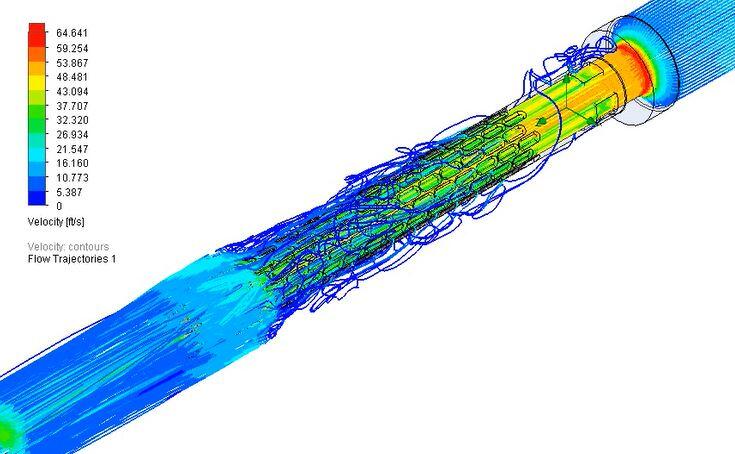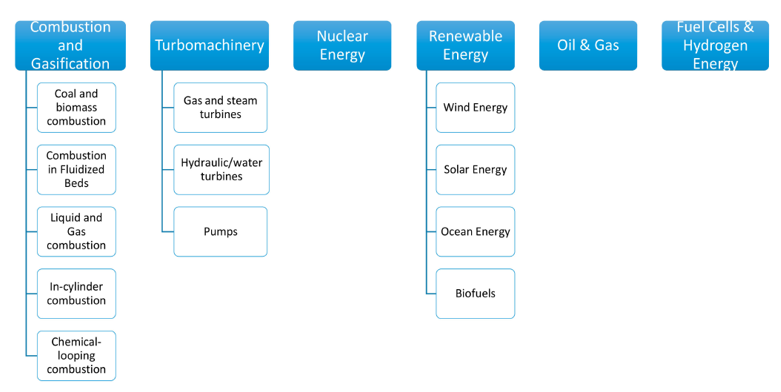
In modern engineering, fluid dynamics is the study of fluid and their motion because fluids are everywhere, and fluid motion affects our everyday lives. Fluid dynamics is important in nearly all areas of science and technology: biology, engineering, chemistry, geology, meteorology, space science and agriculture etc. CFD services included predications based on fluid dynamics analysis can have significant impact on achieving and improving design performance goals, reducing product costs, shortening the design cycle, providing better safety margins for new products, understanding product problems and failures etc. CFD consulting on different applications like wind design of tall buildings and structure, Mechanical Engineering and Civil Engineering fields, Design Engineering, smart factories, Energy Engineering etc. In this research paper included CFD service, CFD consulting and CFD engineers.
CFD consulting which developed their expertise in computational fluid dynamics (CFD) consulting with years of CFD project work in medical, aerospace, marine, HVAC, civil and automotive. CFD consulting has been extensively benchmarked by experiments and in-service testing.
CFD service of case studies provides hard evidence of their CFD consulting projects: space-based communications equipment, bio-fuel combustion, aerodynamic drag, hydroelectric spillways, dispersed particle flow, data centers, power electronics and HVAC air handling systems. [8]
In CFD and really, all types of engineering simulation, experience is the key in knowing whether one has a cartoon or a true digital twin that can be taken from design into production. CFD consultants feel that this is their competitive edge and their proven value to their clients.
CFD Service
CFD service included to check behavior of fluid and gas in different area of Mechanical Engineering and Civil Engineering field. In Mechanical Engineering, CFD engineer involved in consulting work on heat and mass transfer problem in power plant also like chemical plant, petroleum, or gas plant in which check behavior of liquid and gas flow in pipeline and also thermodynamic properties. CFD service also includes HVAC application, centrifugal pump, jet engine combustion chamber to diminish the formation of NOx. CFD analysis can be used in hydraulic engineering in areas such as free surface nonstationary embankment dams flow numerical modeling, particle migration modeling and flow going through granular filter dams, research on hydropower engineering to determine the choice on the foundation elevation dam and utilized in the extracting of the municipal water system.[5]
Computational Fluid Dynamics can also be used to study irrigation systems which are made up of a pipe network used to transport water to irrigate crops. The significant parameters that need to be considered and accurately predicted in CFD are friction losses, other losses in the pipe network and the velocities of the flow to achieve the optimal working conditions and the adequate water uniformity that is to be fed on the irrigated area.
In building design and construction CFD numerical analysis is essential for intelligent buildings design and ventilation design systems for sports activities.
CFD Consulting and role of CFD Engineers
During CFD consulting, the main step follows by CFD engineers as CFD works flow:
Pre-Processing
- Geometry modeling
- Mesh generation.
- Physical model definition
Solving
- Transport Equation (mass, phases, momentum, energy others)
- Physical Models (combustion, radiation, chemical reaction, others)
- Solution Setup (materials, boundary conditions)
- Sover Setting
Post-Processing
- Visualization and interpretation of graphical and numerical results (contour-plots, Tabular data)
CFD Applications in Energy Engineering Research and Simulation
This section will cover the main CFD applications in energy and thermal engineering. A thorough review of such a wide variety of different applications is however not feasible within one single publication. Instead, a brief introduction to the most significant reviews that have been published on the topics related to CFD in energy and thermal engineering is provided. The objective of the review is thus to provide an overview of the CFD applications in energy and thermal engineering, highlighting the review papers published on the different topics, so that readers can refer to the different review papers for a thorough revision of the state of the art and contributions into the field of interest. The applications covered are depicted in Figure 1.[7]

Figure 1. CFD applications related to energy and thermal engineering covered in this review
To date, there has been a significant scientific production regarding CFD application in the areas indicated in Figure 1. The number of publications identified for each field are presented in Figure 2.

Figure 2. Bibliometric study: Number of scientific publications in the areas indicated in Figure 1.
Conclusion
This brief review has covered the main CFD applications in energy and thermal engineering. A brief introduction to the most significant reviews that have been published on the topics related to CFD in consultant and service has been provided, so that readers can refer to the different review papers for a thorough revision of the state of the art and contributions into the field of interest.
The strong competition among CFD software vendors will ensure further efforts on model developments to enhance accuracy and even cover new applications and novel technologies. Industry will continue to increase its reliance and trust on CFD to improve their product designs and reduce design cycles and associated costs. The expected transition towards an energy system mostly based on renewable energies that will (sooner or later) take place, will require major efforts in technology development that will surely be supported by CFD in energy engineering research. Based on the above, it can be thus ensured that CFD will continue to grow and expand, and it will be necessary to ensure that quality and trust is maintained among users, by further developing, refining, and using CFD best practice guidelines.
References
| [1] | Kasun Wijesooriya, Damith Mohotti, Chi-King Lee, Priyan Mendis, “A technical review of computational fluid dynamics (CFD) applications on wind design of tall buildings and structures: Past, present and future”, Journal of Building Engineering 74 (2023) 106828. |
| [2] | Basheer Khan, Colin Quintyn, Antalov Jagnandan, Shawn Jagnandan, “Computational Fluid Dynamics analysis of Fluid application in Mechanical Engineering and Civil Engineering fields – A Review Article”, International Journal of Scientific Research and Engineering Development-– Volume 6 Issue 3, May-June 2023. |
| [3] | Dmitry Eskin, “On CFD-Assisted Research and Design in Engineering”, Energies 2022, 15, 9233. https://doi.org/10.3390/en15239233. |
| [4] | Luca Silvestri, “CFD modelling in Industry 4.0: New perspectives for smart factories”, Procedia Computer Science 180 (2021) 381–387. |
| [5] | CFD Engineering Services, “Computational Fluid Dynamics Analysis”, www.predictiveengineering.com. |
| [6] | John Nguyen, Brady Peters, “Computational Fluid Dynamics in Building Design Practice”, ACADIA 2020. |
| [7] | Alfredo Iranzo, “CFD Applications in Energy Engineering Research and Simulation: An Introduction to Published Reviews”, Processes 2019, 7, 883; doi:10.3390/pr7120883. |
| [8] | Krutartha Sudhir Jathar, Vivek V. Kulkarni, “An Elementary Study of Computational Fluid Dynamics for Various Engineering Applications – A Review”, International Research Journal of Engineering and Technology (IRJET). |
| [9] | Debasis Chakraborty, “Forty Years of Computational Fluid Dynamics Research in India Achievements and Issues”, Defence Science Journal, Vol. 60, No. 6, November 2010, pp. 567-576. |
| [10] | F. D. Witherden and A. Jameson, “Future Directions of Computational Fluid Dynamics”, American Institute of Aeronautics and Astronautics. |
